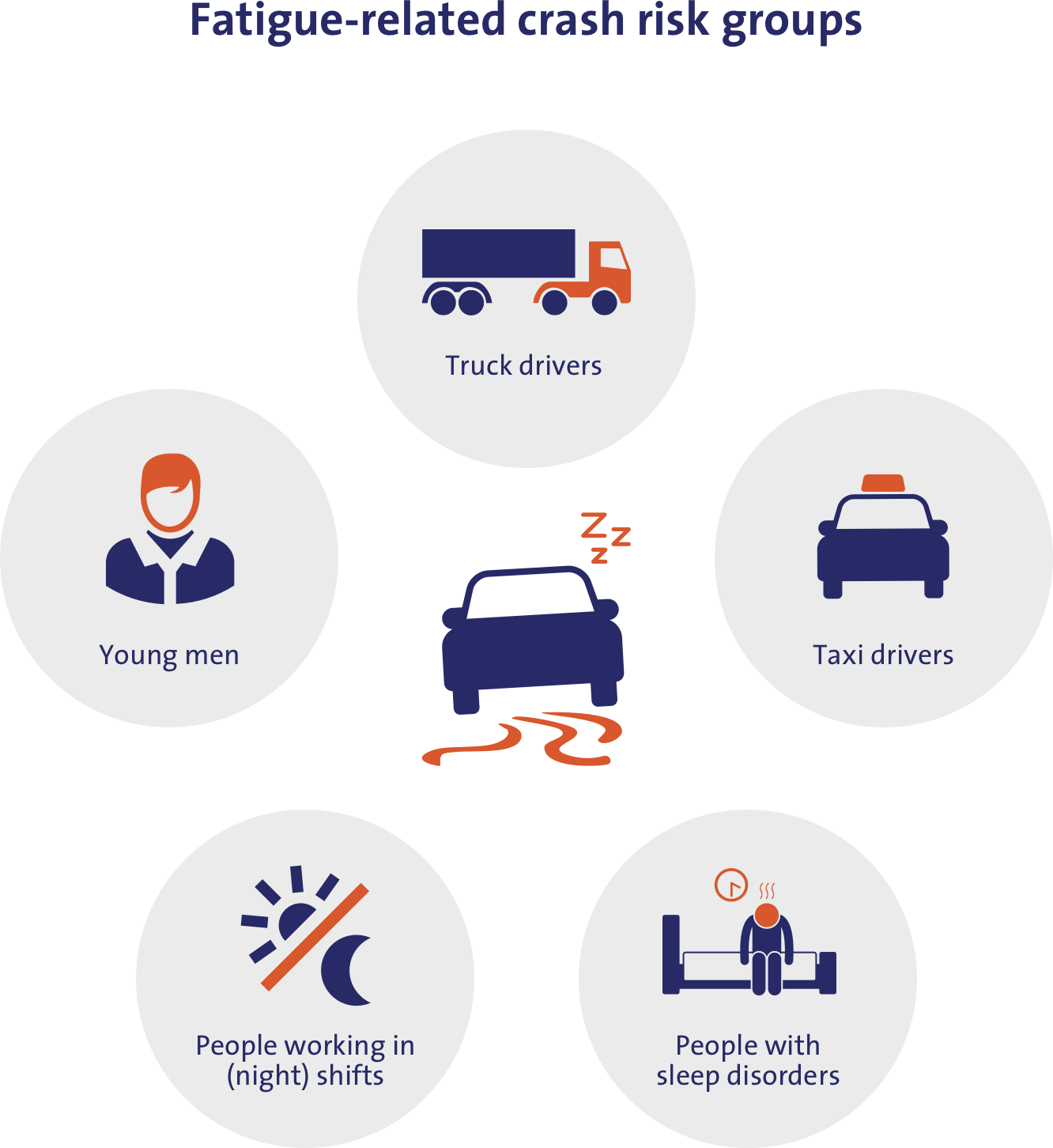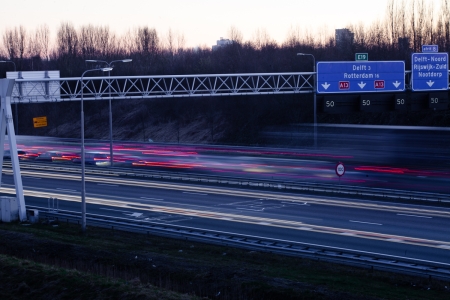
Some people have a higher chance of being involved in a fatigue-related crash than others. This relates to the circumstances of their traffic participation, to physical aspects, lifestyle and combinations of these factors. Groups that are relatively often involved in a fatigue-related crash are [3]:
- (international) truck drivers;
- taxi drivers;
- people working in (night) shifts;
- people with sleep problems/disorders;
- young men.
Proof of over-representation of taxi drivers is circumstantial. An Australian study [19] shows that this group has a higher crash risk. The researchers suspect that fatigue is an important factor on account of the nature of their work (long shifts, also after midnight). A Chinese study reaches similar conclusions on the basis of questionnaire outcomes [20].
Sleep disorders notably include obstructive sleep apnoea (temporary respiratory arrest while sleeping) and narcolepsy (tendency to suddenly fall asleep, also by day). If these disorders are not treated, they will lead to extreme daytime fatigue even after sufficient nighttime sleep. So, this will lead to an increased risk of a fatigue-related crash [18] [21] [22]. The prevalence of sleep apnoea in the Netherlands is not well-established, but is estimated to be between 0.45 and 4% for men (for women prevalence is lower). Sleep apnoea often goes hand in hand with overweight [23]). Overweight, and thus sleep apnoea, is relatively common among truck drivers [22] [24] and taxi drivers [11].
